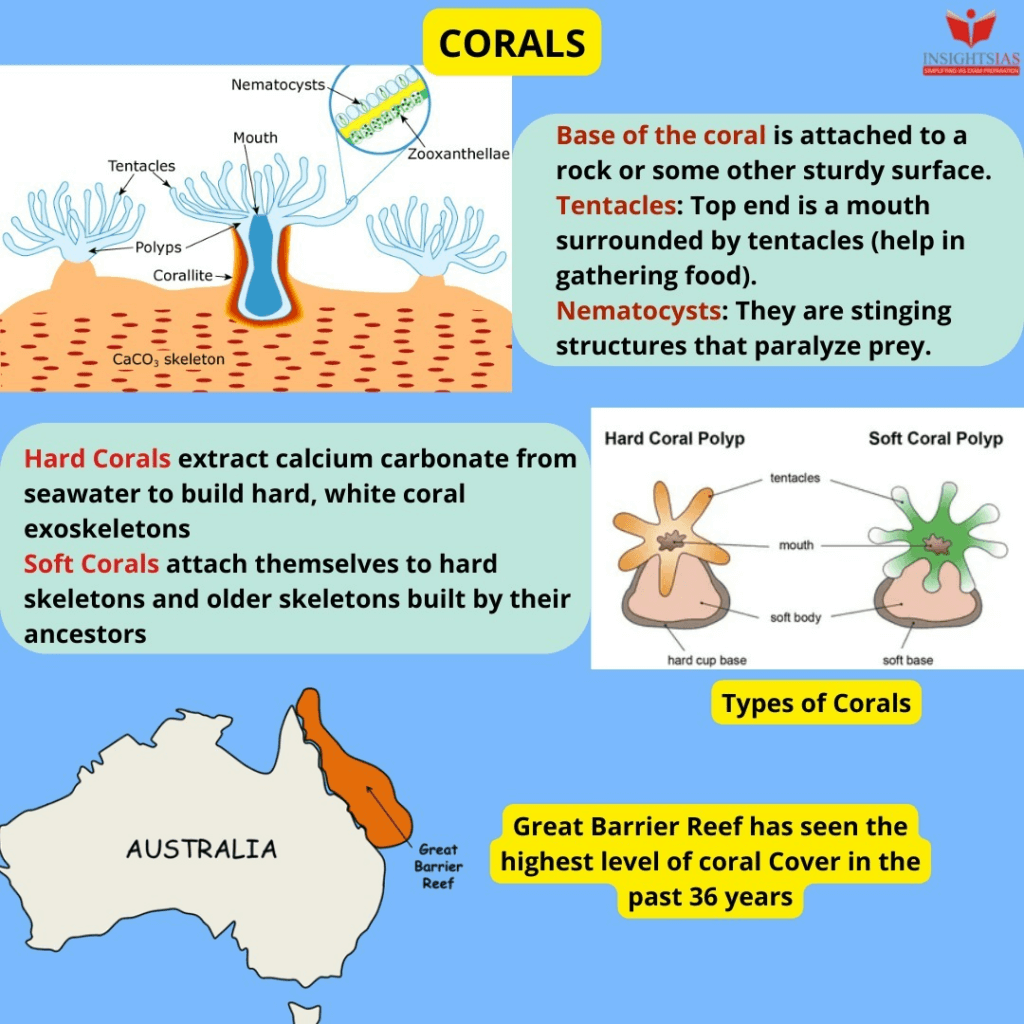Daily Current Affairs : 21-October-2023
In a groundbreaking revelation, geologists have stumbled upon a fascinating discovery in the Burtse region of Eastern Ladakh Himalayas—fossils of coral reefs at an astonishing elevation of 18,000 feet above sea level. This finding has opened a window into the region’s deep geological past, shedding light on an ancient marine ecosystem that once thrived where now only barren landscapes meet the eye.
Revealing the Ancient Marine World
These coral reef fossils, uncovered in Ladakh, provide a glimpse into a previously unknown chapter of Earth’s history. They hint at a time when this region, now a high-altitude desert, was submerged beneath a vast ocean. The fossils, remnants of ancient coral colonies, whisper tales of a diverse marine life that existed millions of years ago. This discovery unveils the secrets of Ladakh’s geological evolution, offering crucial insights into the region’s ancient climate conditions and the impact of tectonic activities.
Supporting the Continental Drift Theory
This remarkable find also supports the widely accepted theory of continental drift. Around 40 million years ago, when the Himalayas emerged, continental plates were thrust out of the Tethys Sea. The presence of these coral reef fossils at such a staggering height provides concrete evidence for this geological phenomenon, emphasizing the dynamic nature of our planet.
The Significance of Ladakh’s Submerged Past
The significance of this discovery cannot be overstated. Ladakh, now known for its rugged mountains and arid terrain, was once a thriving marine ecosystem. Understanding this ancient marine world not only enriches our knowledge of Earth’s history but also has broader implications.
Insights into Ancient Climate Conditions
- The presence of coral reefs suggests a relatively warm climate, necessary for the growth of coral colonies. This challenges our perception of Ladakh’s historical climate and adds depth to our understanding of ancient weather patterns.
Impact on Ladakh’s Geological History
- The discovery of these fossils reshapes our understanding of Ladakh’s geological evolution, providing geologists with valuable data to decipher the region’s complex geological processes.
- It offers clues about the movement of tectonic plates and the forces that led to the rise of the Himalayas, enriching our comprehension of Earth’s ever-changing landscapes.
Preserving Earth’s Breathtaking Diversity
This finding underscores the importance of preserving Earth’s geological diversity. The ancient coral reefs of Ladakh, now revealed to the world, remind us of the vast mysteries our planet holds. As we unravel these mysteries, we must also acknowledge our responsibility to protect and conserve the natural wonders that have shaped the world we live in.

Important Points:
- Geologists discovered coral reef fossils at an elevation of 18,000 feet above sea level in the Burtse region of Eastern Ladakh Himalayas.
- These fossils reveal the existence of ancient coral colonies, indicating Ladakh was once submerged under a vast ocean.
- The discovery offers insights into Ladakh’s geological history, ancient climate conditions, and the impact of tectonic activity.
- The finding supports the theory that the Himalayas emerged when continental plates were thrust out of the Tethys Sea about 40 million years ago.
- Coral reefs, composed of coral colonies held together by calcium carbonate, provide vital underwater ecosystems supporting marine ecology.
- The presence of these fossils challenges our perception of Ladakh’s historical climate, suggesting a relatively warm climate conducive to coral growth.
- This discovery reshapes our understanding of Ladakh’s geological evolution, offering valuable data for geologists studying the region’s complex geological processes.
- It provides clues about the movement of tectonic plates and forces that led to the rise of the Himalayas, enriching our comprehension of Earth’s changing landscapes.
- The finding underscores the importance of preserving Earth’s geological diversity and the need to conserve natural wonders to protect our planet’s history and biodiversity.
- The discovery of coral reef fossils in Ladakh continues to inspire scientific curiosity, unraveling the mysteries of our planet’s history and showcasing the awe-inspiring wonders beneath Earth’s surface.
Why In News
Geologists have made a remarkable discovery of coral reef fossils at an elevation of 18,000 feet above sea level in the Burtse region, Eastern Ladakh Himalayas, providing intriguing insights into the geological history of the region and raising questions about the ancient climate and sea level changes in the area.
MCQs about Ladakh’s Geological Marvel:Ancient Coral Reefs Uncovered
-
What did geologists discover in the Burtse region of Eastern Ladakh Himalayas?
A. Ancient fossils of marine animals
B. Coral reef fossils at an elevation of 18,000 feet above sea level
C. Remains of an ancient human civilization
D. Fossils of prehistoric plants
-
What does the presence of coral reefs in Ladakh suggest about its past climate?
A. Ladakh was always a high-altitude desert
B. Ladakh had a relatively warm climate conducive to coral growth
C. Ladakh was once covered in snow and ice
D. Ladakh had a tropical climate
-
Why is the discovery of coral reef fossils in Ladakh significant?
A. It proves the existence of ancient civilizations in Ladakh
B. It provides insights into Ladakh’s geological history, ancient climate conditions, and impact of tectonic activity
C. It confirms the presence of gold deposits in Ladakh
D. It indicates the region’s recent geological activities
-
What does the discovery of coral reefs in Ladakh emphasize about Earth’s history?
A. Earth has always had the same climate
B. Earth’s landscapes are constantly changing
C. Coral reefs can only be found in oceans
D. Ladakh was once a densely populated area
Boost up your confidence by appearing our Weekly Current Affairs Multiple Choice Questions
![]()


